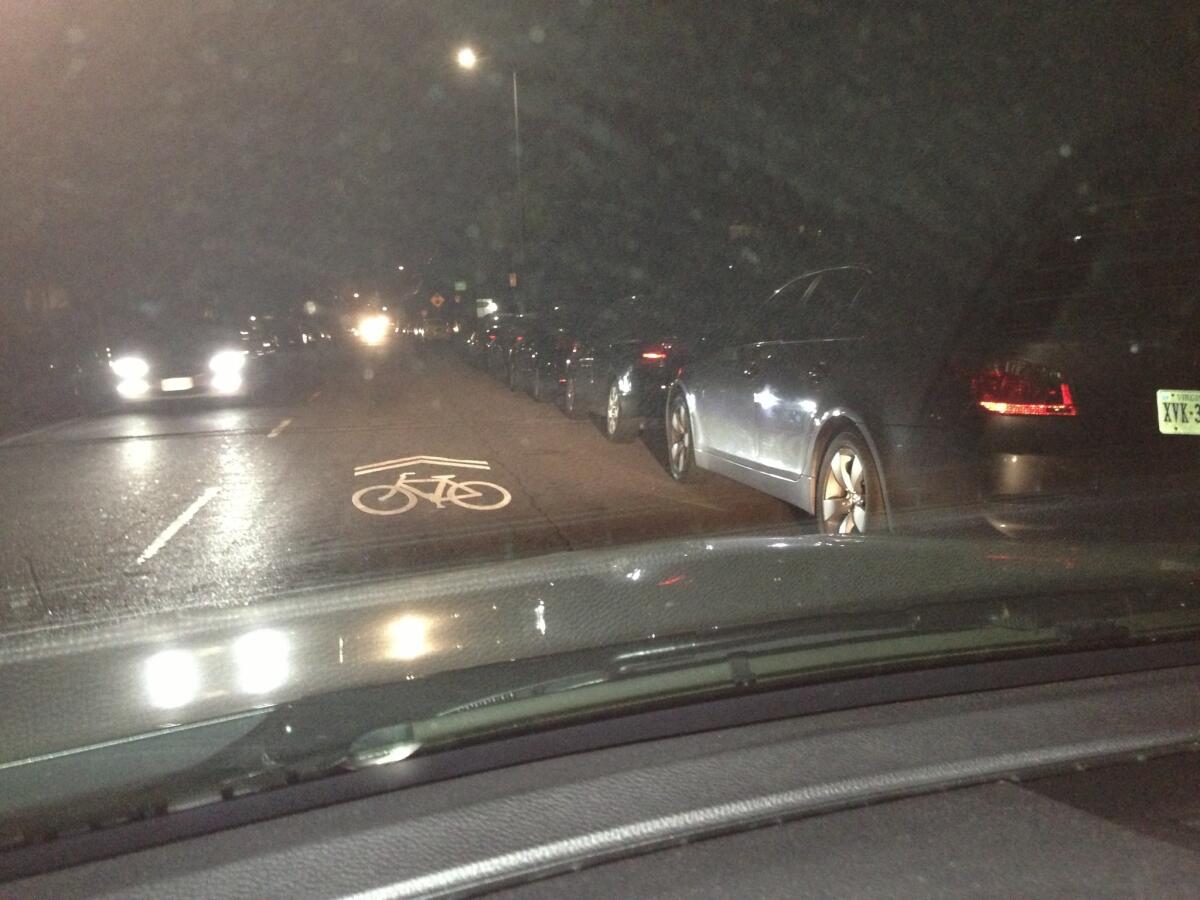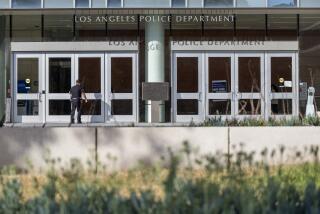Sharing the road with bicyclists — still a challenge for this car girl

- Share via
I like to think I’ve learned a lot about what it’s like to be bicyclist on the streets of Los Angeles since this blog took up the RoadshareLA project (which you can find online and follow on twitter at #roadshareLA) last fall. I am still a die-hard, love-to-drive car girl — but an enlightened one: Yes, bicyclists have as much legal right to the road as drivers …. No, you can’t feasibly license bicyclists the way we do drivers .… Separate bike lanes are crucial to making the city bikable — drivers, get over it.
So why was I fuming at the bicyclist I found myself behind on Ohio Avenue in West Los Angeles one recent night?
It was late, I had worked all day, then slogged through traffic to the gym, and was now finally headed home. I turned off Sepulveda Boulevard to head west on Ohio in a light rain. The street was dark and narrow and slick. And there was the white sharrow symbol — the sign that the road is designated as a shared pathway for cyclists and drivers — painted on the pavement. Up ahead, I could barely make out the dull red light on the back of a bicycle.
I understand that the city needs a bicycle infrastructure of connected pathways, right? Yeah — but not on Ohio, I think. This just does not work here. It’s too dangerous for everyone .… Not to mention annoying.
Within seconds, I’m tailing the bicyclist. There’s not enough room for us to be side by side. I’m stuck behind him.
As I drive, I remember a story that Colin Bogart, the education director of the L.A. County Bicycle Coalition, told me about being on a busy street riding in traffic with a clearly impatient driver behind him. At one point, the driver was able to pull up next to him. “What are you doing?” he asked, agitated. “I’m going straight down the street,” Bogart replied.
“This perception that they shouldn’t have to be delayed at all — that’s going to be less and less the case,” Bogart says about drivers. “The population is going to grow, the streets are going to get bigger, gridlock is going to be more the norm. The issue isn’t the bicyclists, it’s the car culture.”
But at that moment on Ohio, the issue was very much the bicyclist in front of me. I don’t want to be delayed. This sharing isn’t working in L.A., I think. As I get closer, I realize it’s a woman on the bike, not a man. Finally we both get to the traffic light at Federal Avenue where I can make a right turn on red. I don’t, of course. She’s in front of me.
As I sit glumly in my car, I see her turn back a couple of times to look at me. Rain still coming down, she tugs her bicycle and herself over to the left, ending up in the middle of the road. She beckons me to move up beside her and make my right. It’s the kindest thing I’ve seen someone do on the road in days. I inch up to the intersection and lower my window. “Thank you,” I say. “Be careful out here.”
I told this story to another bicyclist who said he routinely moves to the left at a light to let drivers move up to make a right turn. Sometimes drivers don’t even realize what he’s doing and just sit there, he says.
This road-sharing is a work in a progress. Bicyclists and drivers — and I definitely include myself here — need to have a better, even more technical understanding of how the other should proceed on the street. No one, whether in a car or on a bike or bus, wants to be delayed. And I think I can confidently say that no driver in L.A., ever, thinks traffic should go slower. So if it ends up that traffic is forever slower because more bicyclists are being integrated into the road system, it’s going to take some time for drivers to get over that fully.
However, a little kindness and courtesy on everyone’s part will go a long way toward making the road there more bearable.
ALSO:
Robin Roberts comes out — still a big deal
Five feminist arguments that sparked debate in 2013
More to Read
A cure for the common opinion
Get thought-provoking perspectives with our weekly newsletter.
You may occasionally receive promotional content from the Los Angeles Times.











